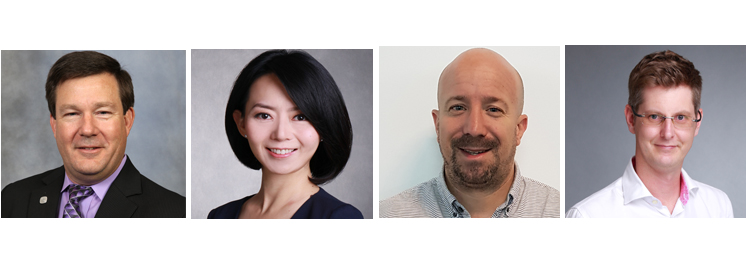Singapore - Biopharma’s Global Hub

Our May-June cover story on the rise of biopharmaceutical manufacturing in Asia noted that “Biopharmaceuticals are booming … buoyed by enhanced regulations, an influx of venture capital, a culture of innovation, and government support.”1 While that report focused principally on China, Indonesia, and South Korea, in this issue we look at another key player in the region: Singapore.
- 1Fotheringham, S. “The Rise of Biopharmaceutical Manufacturing in Asia.” Pharmaceutical Engineering 38, no. 3, (May-June 2018): 10–13.
In June 2000, Singapore launched a national initiative to become a global hub for biomedical sciences (BMS). Within 15 years, the island nation had been named one of the world’s most innovative countries, boasting a robust industrial ecosystem that fuels drug development, clinical studies, manufacturing, and health care delivery.2 , 3 ,4 Singapore has also become one of the most prosperous nations on the planet, with a per capita GDP well above most developed countries, a low unemployment rate, a AAA credit rating,5 and the number-one ranking on the World Economic Forum’s Global Enabling Trade Report 2016.6 Pharmaceutical Engineering’s 2016 profile of the ISPE Singapore Affiliate described “a global commerce, finance, and transportation hub” with a “world-class” pharmaceutical and biotechnology industry.7 The pharmaceutical sector’s manufacturing output has tripled since then,8 highlighting the country’s rapid development.
In this article, Pharmaceutical Engineering garners the perspectives of four regional industry experts: ISPE Singapore Affiliate President Joseph Micsko, Affiliate Vice President Shanshan Liu, Past Affiliate President Pierre Winnepenninckx, and ISPE International Board Chair Tim Howard.
Multinational Players
Micsko, Operations Director, PSC Biotech, described the country’s current biopharmaceutical landscape as a geographically consolidated mix of multinational companies, including AbbVie, Alcon, Amgen, GlaxoSmithKline, Kaneka, Lonza, Merck Sharp & Dohme (MSD), Mundipharma, Novartis, Pfizer, Roche, Sanofi, and Shire. Many are housed in the city’s Tuas Biomedical Park, a collection of manufacturing facilities in a 300-hectare footprint, and the nearby Biopolis, a complex of seven biomedical research buildings completed in 2004. Despite the dense development, Micsko remarked that “there have been no major FDA or EU regulatory observations” to date.
Nigel Cheong, Head, Biomedical Sciences, Singapore Economic Development Board (EDB), offered a keynote presentation on the Singapore biopharmaceutical industry at the August 2017 ISPE Singapore Affiliate Conference.9 It described the country as “a leading bio-cluster in Asia,” with more than 50 manufacturing plants employing over 18,000; more than 50 R&D centers and over 2,000 private sector researchers; and more than 30 leading regional headquarters, with over 7,600 employees.
The presentation also highlighted some recent “first-in-Asia” biologics investments in Singapore, including Amgen’s introduction of the world’s first commercial-scale “next-generation” single-use facility, Novartis’s state-of-the-art biotech production for large- and small-scale volumes as well as its technological competence center, and AbbVie’s campus for combined biologics and small-molecule production.
Finally, the keynote outlined an “ecosystem of suppliers, solution providers, research institutes and academia” that creates an environment conducive to growth in the region’s biopharmaceutical industry. This includes elements that provide integrated analytics technology such as process control systems, sensor systems, and process analytics. Bioprocess technology and capabilities both up- stream and downstream complete the “ecosystem.” On the research and academic front, there are multiple elements of the Singapore A*Star—the Agency for Science, Technology, and Research—along with institutions such as Nanyang Technological University, Nanyang Polytechnic, the National University of Singapore, the Singapore University of Technology and Design, and the Singapore Institute of Technology.
As of May 2018, biopharma’s growth has been notable. According to the EDB, biomedical manufacturing in Singapore had grown 17.7% from the previous year. Within the cluster, the pharmaceutical segment grew 19.2%.10
An Imported Industry
The city’s pharmaceutical manufacturing complex has been growing since 1972, when GSK established an amoxicillin facility there.11 “You could say the ‘pharmaboom’came in 2006 and 2007, with much biological investment,” said Winnepenninckx, CEO and Founder of No Deviation Pte, Ltd. He came to Singapore in 2008 as a process engineer working on a new vaccine facility with Belgium-based GlaxoSmithKline (GSK).
Affiliate Vice President Liu, former Senior Technical Expert, Global Engineering, with Novartis Singapore Pharma Manufacturing Pte, Ltd., noted that Singapore’s pharmaceutical industry started with an imported foundation. “Singapore is very unique, with much knowledge from Europe and the USA,” she said. “Today, Singapore is developing its own R&D.”
This had some implicit advantages, as the industry was “mostly already mature, with pilots and R&D that came from somewhere else. Singapore was on the ‘receiving side’ of the knowledge,” Winnepenninckx said. Liu noted, however, that the island nation is seeking more industrial autonomy. “We are building on a solid foundation, but this can hamper innovation on some levels. We need to focus on our own local development; Singapore wants to build its own industry,” she said.
Despite its roster of big industry names, “Singapore is quite new on the whole for biopharma industry, and this brings some challenges,” Micsko said. Efforts to develop the workforce have included training programs in North America and Europe. “And Singapore is a training hub, where expats come and train the local workforce. But that’s a double-edged sword. There’s a desire to build up the local workforce, but you have largely expat leadership making key decisions for facilities here. The problem is that shifting away from expat leadership will lose some of that experience and expertise.”
The path toward a more autonomous internal workforce is to use these programs to develop high-level local leaders, he said.
Challenges and Opportunities
One challenge for Singapore is that “there are very few complete products here—although MSD has filling and packaging—and no substantial local market. Products produced locally are sent somewhere else in the world as part of the supply chain,” Winnepenninckx said.
Another hurdle, the attrition of human resources, is an ongoing concern, he continued. The rapidly developing financial industry, for example, draws capable people out of the pharma sector. “Many manufacturing sites need manpower. Besides, the high cost of living doesn’t help the situation.”
The pharma sector’s rapid technological innovations—artificial intelligence, machine learning, 3D printing—also raise concerns about the readiness of the country’s young, conservative (i.e., risk-averse) workforce to embrace those changes. “We use risk-based approaches,” and sometimes we’re maybe a little more conservative than we need to be,” Micsko said.
Singapore has several advantages that work in its favor. It was ranked ninth on Forbes’s 2018 “Best Countries for Business” list,12 and second only to Hong Kong on the Heritage Foundation’s 2018 “Index of Economic Freedom.”13 Micsko also emphasized the island nation’s enviable position as the hub of Southeast Asia. “You can get anywhere within a two- to four-hour flight. It’s easy to fly to Thailand, China, India; it’s very accessible.”
Quality of life is another asset, said Winnepenninckx. “It’s very stable on several levels. There’s a stability of politics here, sure. But you’ve also got to consider that we have no typhoons or earthquakes here … things that can be issues in other Asian countries. It’s also a very stable climate, and there’s not a lot of seasonal change.”
This is a plus for manufacturers, he continued. “For example, while it’s true that the humidity creates a high operating cost per square meter, this is offset by other factors.” If companies build the right way on the front end (planning for humidity, for example) they’ll be well positioned for efficient operations because there are fewer shifting elements. It’s warm and humid, but that beats dealing with constantly shifting temperatures, or the natural disasters endemic to other parts of Asia. This is why despite the high cost of living, “There is a good pool of people from places like India and China who are attracted to Singapore. The population is very well educated,” Winnepenninckx noted. Micsko also praised the country’s determined young workforce. “People here like to work hard. Many operations run 24/7,” he said.
- 2Gin, Beh Swan. “Singapore—The Biopolis of Asia.” SMA News, November 2004. https://www.sma.org.sg/sma_news/3611/research_bsg.pdf
- 3World Intellectual Property Organization. “Global Innovation Index 2014.” 18 July 2014. http://www.wipo.int/pressroom/en/articles/2014/article_0010.html
- 4Grindrod, Martin. “Vibrant Growth in Singapore Pharma Industry Being Driven by Innovation.” Proclinical. 28 April 2018. https://www.proclinical.com/blogs/2015-4/growth-in-singapore-phar- ma-industry-driven-by-innovation/
- 5CNBC. Economy. “S&P Keeps Singapore Rating at AAA, Says Probability of Downgrade ‘Remote.’” 12 April 2017. https://www.cnbc.com/2017/04/12/sp-keeps-singapore-rating-at-aaa-says-proba- bility-of-downgrade-remote.html
- 6World Economic Forum. “The Global Enabling Trade Report 2016.” http://reports.weforum.org/global-enabling-trade-report-2016
- 7McGrath, Mike. “Singapore Affiliate: A Leading Force in Southeast Asia.” Pharmaceutical Engineering 36, no. 4 (July-August 2016).
- 8Singapore Economic Development Board. “Pharmaceutical and Biotechnology.” 9 April 2018. https://www.edb.gov.sg/en/our-industries/pharmaceuticals-and-biotechnology.html
- 9Cheong, Nigel. “The Singapore Biopharmaceutical Industry.” Keynote presentation at the August 2017 ISPE Singapore Affiliate Conference.
- 10Singapore Economic Development Board. “Monthly Manufacturing Performance—May 2018.” Media release, 26 June 2018. https://www.edb.gov.sg/content/dam/edbsite/downloads/resources/ may2018-mthly-mfg-performance-media-release.pdf
- 11GlaxoSmithKline. About Us. Sites. “Singapore.” http://sg.gsk.com/en-sg/about-us/sites
- 12Forbes. “Best Countries for Business.” https://www.forbes.com/best-countries-for-business/list/
- 13Heritage Foundation. 2018 Index of Economic Freedom. Country Rankings. https://www.heritage. org/index/ranking

Smart City
BMS is a major pillar of the Singaporean economy, said Tim Howard, Vice President of Asia Operations for Commissioning Agents International. “The country has a keen interest in being a biotech leader. Singapore has invested in its workforce of the future through state-sponsored programs intended to establish a technically strong workforce for the Singapore biotech industry.”
Winnepenninckx said, “It’s a smart city. They’ve reduced the cost of production, implementing and promoting operational excellence. And it’s all condensed in roughly 20 square kilometers.” This creates some real operating efficiencies. There’s a condensed pool of knowledge, which fosters a culture of communication and collaboration. The drawback is the previously mentioned competition for people, he explained. The Biopharmaceutical Manufacturers’ Advisory Council has helped with agreements that prevent employee poaching among competing companies.
“The beauty is that Singapore is a part of PIC/S,” he continued, referring to the Pharmaceutical Inspection Co-Operation Scheme.14 “Mr. Meow Boon Hoe (Deputy Director, Overseas Audit/Senior GMP Auditor at Singapore Health Sciences Authority) is the 2018–2019
Chairman of PIC/S. This is a good marketing advantage from a compliance perspective. And it’s vital, given the need to export due to the lack of a local market. This is in contrast to somewhere like Thailand, which has 100 million customers in the country.”
Singapore Affiliate: Continued Growth
Founded in 2000, the affiliate is the oldest in the Southeast Asia region. Tim Howard commented that “with respect to the APAC region, the ISPE Singapore Affiliate is one of the strongest and most active, on par with many of our affiliates and chapters in the US and EU.”
The affiliate’s growth in recent years has been substantial, Winnepenninckx added. “When I joined in 2012, we had maybe one or two events per year. We have gained a lot of momentum, to the point where we have around two events per month.” Micsko, the current president, concurred. “Our growth is enthusiastic. I think we now have about 36 events per year. Maybe it might even be too many!”
To draw young professionals, the affiliate offers twice-monthly “Tech Tuesdays,” which aim to develop and showcase local expertise rather than bringing in outside speakers. “We want to focus on our good local workforce—meaning both natives of Singapore and people from other countries who live here,” Micsko said. “It’s a brainstorming session. An hour in the classroom, sharing knowledge. We do a Facebook Live, which eventually we want to make more interactive. We’ve done six or seven of these, averaging about 25 people. We’re starting to have broader representation among various industry players.” In a recent brainstorming session with the Asia–Pacific Council in the Philippines, “we saw how other affiliates like Japan and the Philippines are integrating their young professionals.”
The affiliate also seeks “a high synergy with other regional affiliates, like Thailand and Indonesia, with face-to-face events around six times per year,” said Winnepenninckx. “We want to support the goals of the Asia–Pacific region. Ideally, we want to give back to the international community.”
It seems the affiliate is on the right track. As Howard put it, “This is a highly successful, well-managed affiliate with an engaged population of volunteer members.”
- 14PIC/S. “History of PIC/S.” https://picscheme.org/en/history
Daily Life
And what about work-life balance? “Living here is very comfortable,” Liu said. “We only have one season. It’s clean. There are always opportunities, and teams are very international.” She emphasized the range and variety of perspectives that come with the workforce diversity, a product of massive population growth from roughly four million people 10 years ago to around six million people projected for 2020. “You’ll see 15 to 25 nationalities at a manufacturing site,” Winnepenninckx noted.
The country’s small size makes travel easy. “You can get from one side of the island to the other in an hour and 15 minutes. You don’t need a car. You can take the train or a bus anywhere you need to go,” Micsko said.
This condensed geography also creates challenges, however. “Space is extremely constrained,” said Liu. (Interestingly, a substantial portion of the industrial space is dedicated to pharmaceuticals.) And although Singapore incinerates 100% of its waste and has no landfills, trash has become an issue; ash by-product is rapidly filling the nearby island designated for this purpose. This is just one example of the challenges facing a small island nation undergoing rapid industrial development.
An Open Road to The Future
Micsko is optimistic. “Singapore has a bright future. The government is looking for ways to bring in other big multinational players while investing in innovation with the local workforce and local universities.” It’s clear that Singapore will continue to be a key player, a formidable force in the global biopharmaceutical industry for years to come.


